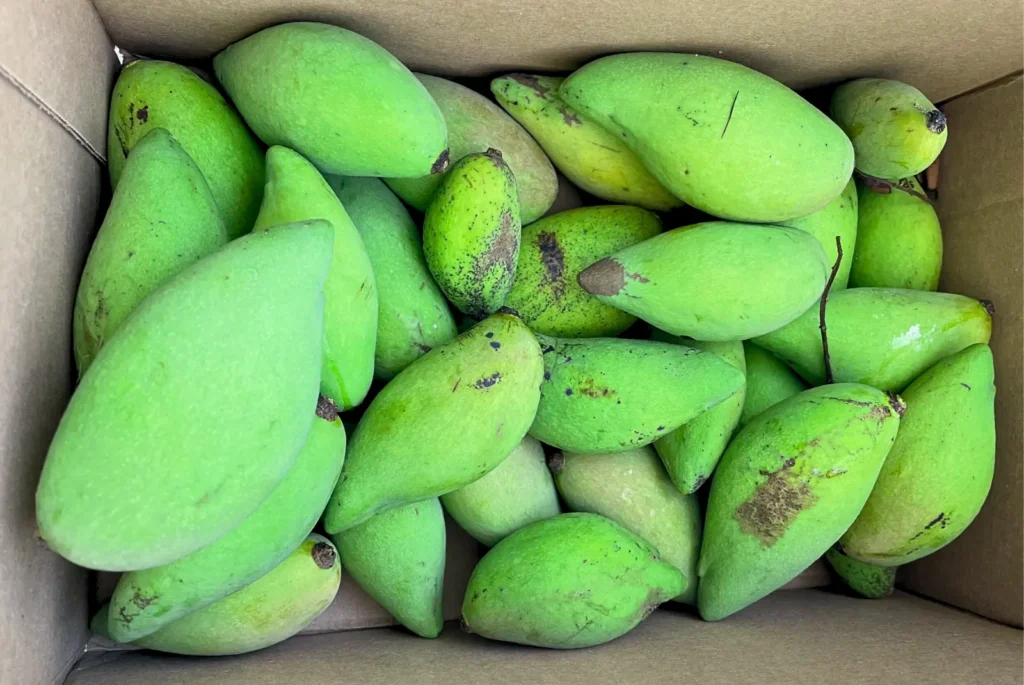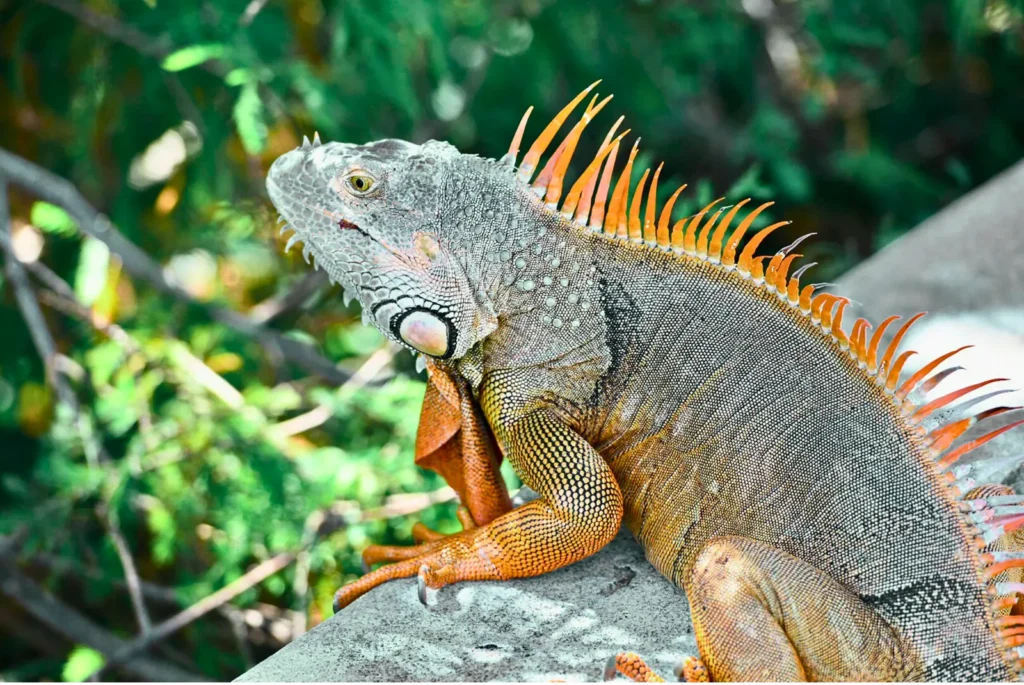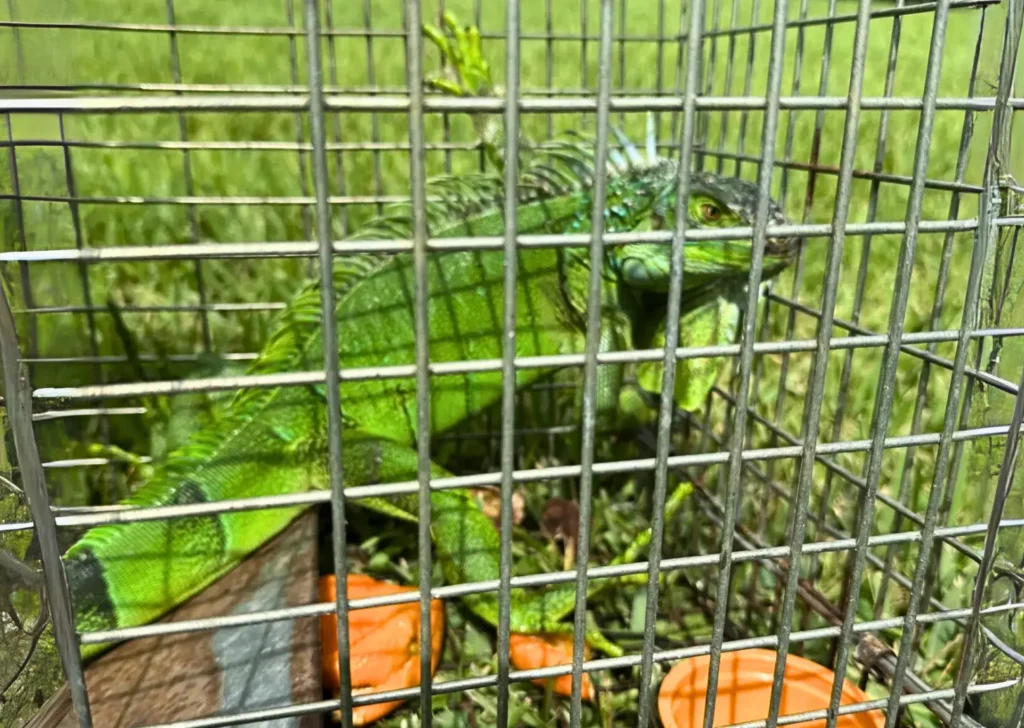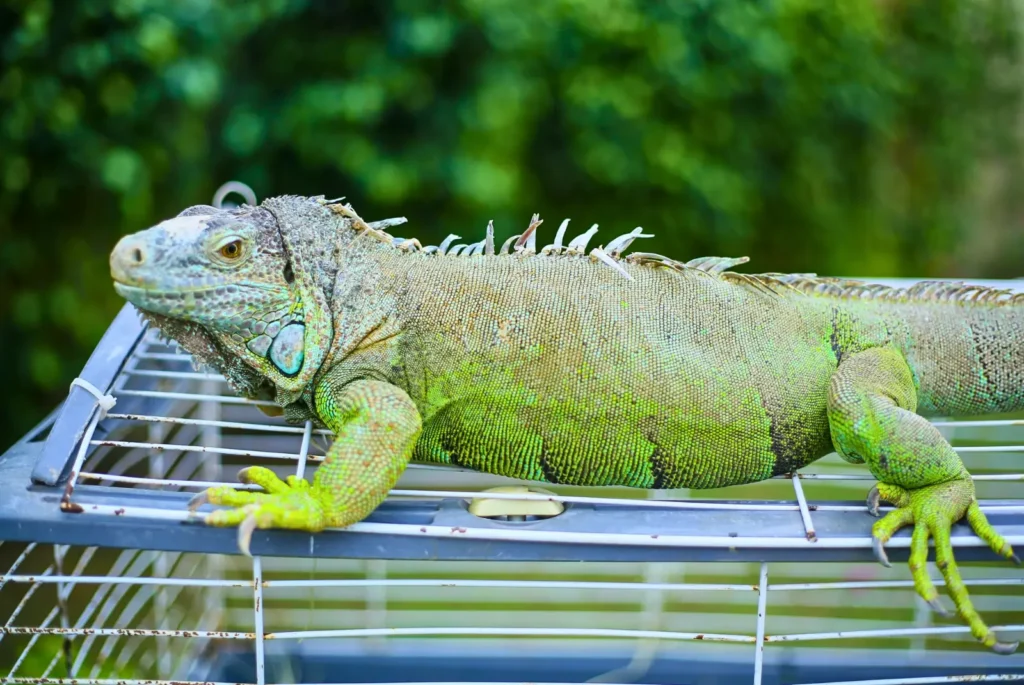Hey! That Iguana Stole My Mango!
How to Stop Iguanas from Eating Your Mangoes
Affiliate Disclosure: Some of the links on this page are affiliate links. This means if you click on a link and make a purchase, Dont Iguana may earn a small commission, at no extra cost to you. We only recommend products and tools we believe are helpful for keeping your Florida property iguana free!
If you’ve ever stepped into your backyard in the summer and noticed half eaten mangoes scattered on the ground, iguanas may be your culprit. We’ve seen our fair share of full grown iguanas leap from fences into trees, and watch those beautiful fruits fall to the ground. Across South Florida, iguanas have gone from curious sunbathers to serious pests, especially when it comes to citrus or fruit trees.
Lately, iguanas are obsessed with mangoes! Now is the time for Florida homeowners to reclaim their fruit and gain peace of mind. We’re about to tell you how. Luckily, you don’t need expensive equipment or dangerous chemicals to take control. With a few smart adjustments, you can iguana proof your yard and enjoy your Florida land again.
Why Iguanas Love Mango Trees
Mangoes are a magnet for iguanas. These herbivorous lizards aren’t picky eaters, but mango trees offer them an irresistible combo: juicy fruit, dense foliage, and high branches for safety and sunning.
Once iguanas find your tree, they’ll come back daily. And they’ll tell their friends. These guys are not just taking one or two pieces of fruit, they’ll strip a tree of everything edible, sometimes before it’s ripe enough for you to pick.
Signs You’ll Often Notice:
- Bite marks or torn skins on fruit still on the tree
- Mangoes vanishing overnight
- Droppings on branches or your patio
- Burrows near the base of the tree or around your foundation
These signs point to a long term iguana issue that can escalate fast.

The Florida Iguana Problem
Florida’s green iguanas may look like tropical wildlife, but they’re actually invasive outsiders. Native to Central and South America, these lizards have exploded in population across the state thanks to our year round heat and lack of natural predators. (Not that we’re complaining about any of those things!)
Unfortunately, the damage they cause goes well beyond mango trees. They’ll munch through gardens, tear up landscaping, and burrow tunnels that can destabilize everything from sidewalks to seawalls. It’s not uncommon for homeowners to discover iguana holes near patios, or notice their prized hibiscus shredded overnight.
Even worse, their..eh hem.. droppings can pose health risks, carrying bacteria like Salmonella that can contaminate decks, pools, or even pet bowls.
If you’re dealing with iguanas in your yard, there are safe, humane ways to manage the problem. Our Iguana Control Guide walks Florida homeowners through simple, humane steps that actually work. You can also visit Florida Fish & Wildlife Conservation Commission for what’s allowed and what’s not, here in South Florida.
How to Keep Iguanas Out of Your Mango Tree
Step 1: Make Your Yard Less Inviting
Start by making your yard less attractive to iguanas. Remove fallen mangoes as soon as they hit the ground, even overripe or rotting fruit will draw them in. Trim back any branches that provide easy access for them to jump from, like fences, rooftops, or neighboring trees. If you’ve got dense plants near the base, clear them out to remove hiding spots.If you spot any iguana burrows (often seen as wide, shallow holes near the base of trees or along patios) fill them in with gravel or expanding soil. Then place a heavy object, like a paver, or chicken wire over the spot.
Step 2: Use Smart Physical Barriers
If you have a mature mango tree, netting might feel like a hassle, but it works. Choose a sturdy mesh cover that lets sun and air in but blocks climbing reptiles. This tree guard is reusable and durable enough for Florida weather.
Another easy barrier: wrap the tree trunk with smooth sheet metal or PVC pipe at least 18 inches high. Iguanas can’t grip slick surfaces, so this helps prevent them from reaching the canopy.
Step 3: Add Active Deterrents
This is where it gets satisfying! Motion-activated sprinklers are surprisingly effective.
Set one up near the tree to fire a burst of water when movement is detected. Iguanas hate sudden sprays and quickly learn to avoid the area. For even more enjoyment, set up a Blink or Ring outdoor camera too if you want to watch them running in action!
Another natural way to deter iguanas is to use garlic or pepper based repellent powders/sprays around the trunk or along fence lines. This is a great option if you have little ones or pets around since it’s obviously it’s non-toxic. Don’t forget to re-apply them after rain for best results.
Iguana Prevention Plan
Want a quick reference guide with these steps and more? Download our Free Iguana Prevention Checklist for a simple, actionable plan that walks you through every step to reclaim your yard.


